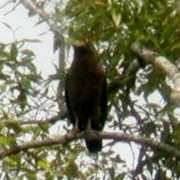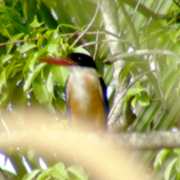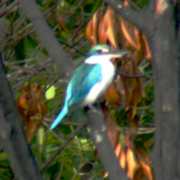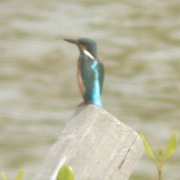| What happened this day :-Took
the usual drive and very quickly I was in Tanjong Karang. The
was not much activities in the fields. Very unusual I thought.
But then again I noticed that most fields are parched dry. Some
in their harvested state and some plots had already being tilled
over. The common scene - dry. The scene. something that I am not
used to, the Bee-eaters and the Wood Swallows was not there on
the wires. No Pacific or Barn Swallows. Then I saw a couple of
plots were in the process of being ploughed. Here the scene is
that with Egrets, Mynas and Pond Herons waiting for sights of
moving "Meals". Without doubts, it was not difficult to assume
that whatever birds remaining in the vicinity were there.

The whole scene
pointed to the fact that this was not the time for normal
birding. Yes, no good, unless one is specific about the type of species sorted
after. That day, I was there for another mission - to pay some cash to the
good Samaritan who had helped me while my car fell into the
field that week before.
With that mission
accomplished and nothing worth me wasting more time, I am off to
Tanjong Tengkorak.
This destination is my
favorite hide-out, when I am not in the mood of walking. It was the
tail-end of the estuary marked by a bund and a dam. You could see both
including the sluice gate in pix. no. 3. The whole place was well
forested and some fishermen had made a clearing and erected the shed
for the storage and maintenance of their nets. This covered structure
[pix. 2] well elevated would users a bird-eye's view of the whole
estuary. At low tide the mudflats will be exposed. Looking across from
the shed hat morning, the light coloured Egret are clearly visible,
while if you look hard enough the Night-Herons are among the bushes
[pix. 3]. This was the first time I had seen Night Heron and in such
numbers which could only indicate that a nesting site was near-by.
 |
| Having
shown you the place, what is so nice about this spot. Well, it
was shaded, with a long bench and hardly visited by its owners
or workers. I have yet to meet any one. All alone, I could sit
and wait. For the tide level to change and for its winged
resident to show their faces. Examples seen here are:-
Left - A Crested Serpent Eagle perched some 500 feet away.
Another resident,
seen here as right pix. much nearer on the opposite bank. Hiding
among the thick foliages. A Black-capped Kingfisher. |
|
 |
Since
this was wetland area, more hunted on land at water's edge
 |
| The
2 pictures of Kingfishers. Both preferred the water edges.
On the left, the
gregarious Collared Kingfisher and right the shy and minute
Common Kingfishers.
Both birds never
failed to show their presence, each and every occasion when I
was at that spot. So for those of you, still having a need to
fill a void in your personal bird list, this is the place you
could consider. |
|
 |
Somehow on that day I
am not impressed with the showings. Perhaps the figure of "thousands"
and the intensity at Sungei Buloh had influenced my judgment. Then
again, the bird list I had made for that day is the best judge. When
it is compared to the list made in earlier visit.
|